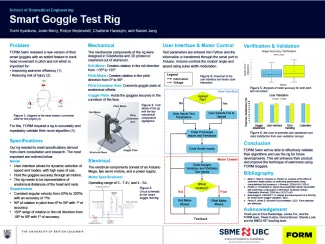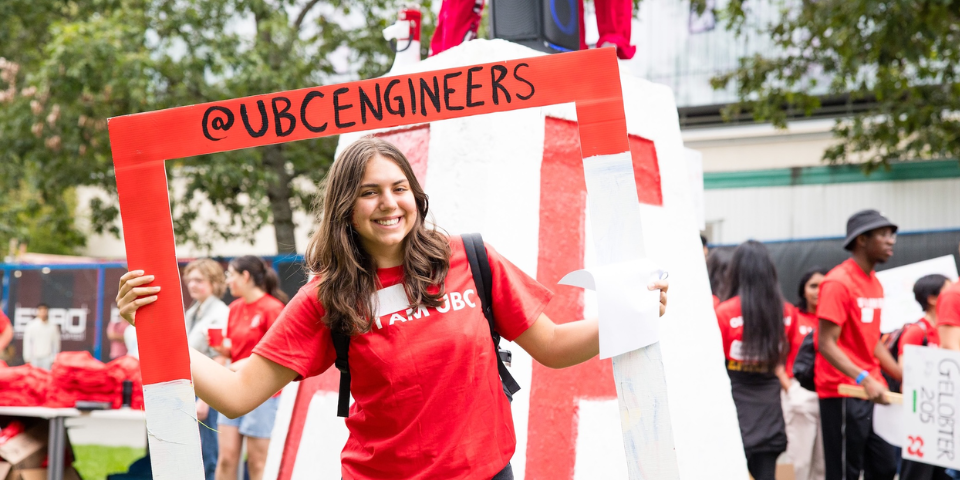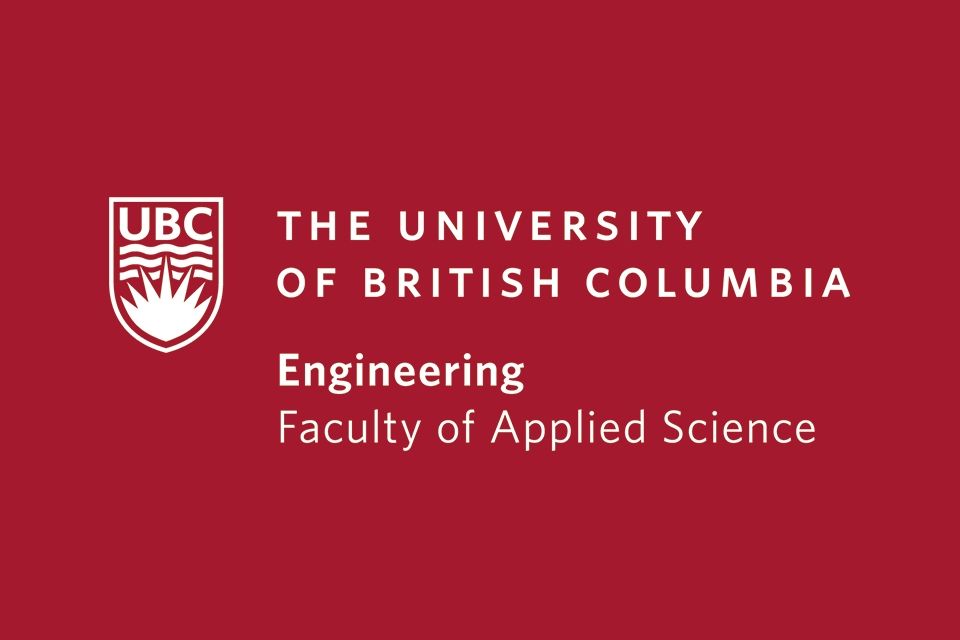
Tochukwu Ayadiuno, Josie Berry, Robyn Beyleveldt, Charlene Harasym and Naomi Jung
- Degree:
- Bachelor of Applied Science
- Program:
- Campus: Vancouver
Our design solution
We designed and built a functioning rig to replicate the biomechanical rotation of a swimmer’s head in the pitch and roll directions during the front crawl.
We used SolidWorks for the design and then 3D-printed various components in PLA along with machining the pitch extension arm in aluminum. The electrical components include two servo motors – one for each direction – that are controlled by an Arduino Mega through an interface where the user can set the desired angle range, speed, and test duration. The pitch and roll motors create rotations of +/- 135 degrees in the roll direction and from 0 to 90 degrees in the pitch, within one degree of accuracy.

What we’re most proud of
All of us have done our degrees during Covid, with online rather than hands-on labs.
This made it all the more rewarding to build a physical product of this scope that integrates so many different areas of engineering from our degree.
We worked really well as a team. Coming into this project, we all had the same high expectations. We had a great time bouncing ideas off each other and working together to advance our ideas for a shared goal.
Finally, it’s been rewarding to work on something that’s very useful – our work is providing FORM with a device that can help them build a better product for their customers.
When the new algorithm is validated and incorporated into the goggles, swimmers will be able to track data that can help them adjust and optimize their technique.





